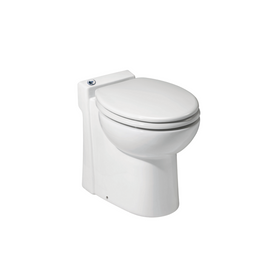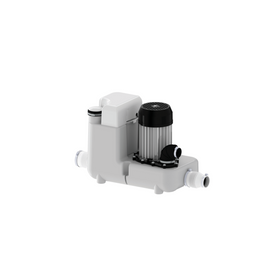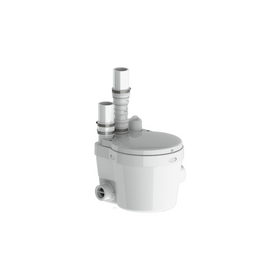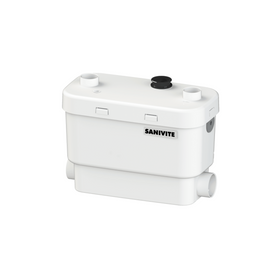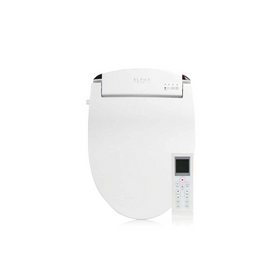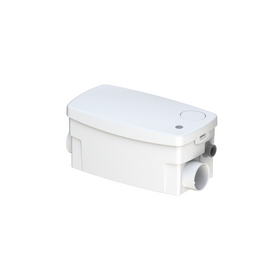
Low Flow Faucets and Toilets: A Guide
Last Updated: Apr 7, 2025Indoor plumbing is, perhaps, one of the greatest modern luxuries. It has increased sanitization standards, reduced chances of infection, and has made our lives so much easier. But ease of access has also significantly increased household water consumption when droughts plague many of our communities. The modern toilet accounts for a whopping 14% of all household water usage, only second to outdoor irrigation.
Water Conservation Measures Demand Low Flow Appliances and Fixtures
Population growth, an increase in indoor water consumption, and drought have made it necessary for governments to enact new laws to help communities conserve water.
Early Massachusetts activists rallied to become the first U.S. state to require all new home construction and remodeling projects to install low-flush toilets in 1988. A few years later, President George H.W. Bush signed the 1992 Energy Policy Act to mandate all new toilets to consume 1.6 gallons or less per flush. The law officially went into effect for residences in 1994 and 1997 for commercial buildings.
The new regulation effectively reduced a single flush of the toilet from the previous 3.5 to 7 gallons of water to 1.6 or fewer gallons. And the U.S. isn’t the only country enacting laws to protect water conservation. Sweden has restricted new toilets to 1.6 gallons per flush low-flow model for years. Australia requires all new toilets installed to be a dual-flush model. Drought-ridden, environmentally-friendly California took the mandates a step further to protect local water by legally requiring all toilets installed after January 1, 2014, to be high-efficiency toilets.
If your house was built before 1990 and the toilets have not been replaced, you could achieve 50% water savings by merely upgrading to new WaterSense toilets. Better yet, there are thousands of rebates available for upgrading outdated toilets to new low-flow toilet models. Check with your city government and local water organizations for savings opportunities.
The bathroom, kitchen, and laundry room faucets also contribute to significant water consumption at an incredible 2.2 gallons per minute. Turning the water off while brushing your teeth or scrubbing dishes does a great deal to conserve water. Upgrading old faucets with WaterSense-approved aerators is even smarter. Doing so can reduce water flow to a low of 1.5 gallons per minute.
Before you rush off to buy new low-flow toilets, take a moment to learn more about the type that best fits your needs.
There are three categories of low flow toilets
Table of Contents
- What Is a Gravity Flush Toilet?
- What Is a Pressure Assist Toilet?
- What Is a High-Efficiency Toilet?
- Low Flow Faucet Facts
- What Is a Metered-Valve Faucet?
- What Is a Self-Closing Faucet?
- What Is a Ultrasonic or Infrared-Sensor Faucet?
- What Is a Foot Control Faucet?
- What Does a Faucet Aerator Do?
- Do Low Flow Toilets and Faucets Save Money and Water?
- Take the Plunge, Go Low Flow
- Bottom Line

What Is a Gravity Flush Toilet?
Gravity Flush Toilets work just like traditional toilets. These toilets have a water tank set higher than the bowl and use gravity and water to flush waste passively.
What Is a Pressure Assist Toilet?
Pressure Assist Toilets compress a pocket of air in the toilet tank to forcefully push water into the bowl and efficiently flush solids with a reduced 1.6 or fewer gallons of water per flush.
What Is a High-Efficiency Toilet?
High-Efficiency Toilets (HETs) consume 20% less water than most low-flow toilets, about 1.28 gallons per flush. Often called Dual-Flush Toilets, these models feature two buttons, one for flushing liquids and another for flushing solids. A liquid-only flush uses just .8 gallons of water!

Especially environmentally-conscious households might even opt for a fourth option, dry toilets. Composting toilets don’t require any water at all!
Low Flow Faucet Facts
“Never let the water run” is a mantra that’s been beaten into our brains. It conserves water in the bathroom, kitchen, and even outside while washing the car. That’s because a standard faucet spills out an incredible 2.2 gallons of water every minute.
WaterSense-approved fixture reduces that flow to 1.5 gallons per minute without sacrificing pressure or performance.

What Is a Metered-Valve Faucet?
Metered-Valve Faucets automatically shut off to reduce water consumption when doing basic things like washing your hands. They deliver .25 gallons at a time, plenty for most grooming needs.
What Is a Self-Closing Faucet?
Self-Closing Faucets use a spring-loaded insert to stop water flow after a few seconds automatically. These faucets make it easy to save water while brushing your teeth without having to worry about turning the tap on and off.
What Is a Ultrasonic or Infrared-Sensor Faucet?
Ultrasonic or Infrared-Sensor Faucets are common in public restrooms for smart water conservation. These faucets detect your hands' movement under the tap and only deliver water when your hands are present.
What Is a Foot Control Faucet?
Foot Control Faucets further improve the ease of water consumption with simple foot pedal water activation.
What Does a Faucet Aerator Do?
You can upgrade your faucets to low flow by replacing the aerator on the tip of the faucet. For most taps, a new aerator comes out to under $10 and can be replaced without a licensed contractor.
The aerator introduces air into the water to separate the flow into tiny streams and reduce water consumption without splashing. Some aerators also come with a flow restrictor that acts as a temporary “off” switch to maintain the water temperature without leaving the water running. The flow restrictor is especially beneficial for washing dishes and grooming on cold winter days.
Contrary to what some think, aerators do not decrease water pressure. The compacted air may even increase your water pressure! If you choose to upgrade your aerator, be sure to take the existing piece with you to the store to make sure you go home with a perfect fit.
Do Low Flow Toilets and Faucets Save Money and Water?
The EPA estimates the average household can save about $90 each year by merely upgrading to low-flow WaterSense toilets. That amounts to a shocking $2,000 saved over the lifetime of the toilet.
Low flow toilets are responsible for saving the average household about 25 gallons of water each day, adding up to more than 9,000 gallons saved every year.
Low flow faucets reduce water consumption by about 30%, according to the EPA. This reduction in water needs also extends the life of your water heater, resulting in an overall household savings of $50-$90 each year.
Adding an aerator to your existing faucet can save your family as much as 700 gallons of water every year. That’s equal to about 40 showers!
Saving Water May Come With a Few Sacrifices
Most homeowners don’t notice much change aside from their water bill's savings, but there are a few things to consider before upgrading your toilets to low-flow models. For example, Pressure Assist Toilets are a tad louder than Gravity Flush Toilets. They may also require a power source.
Low-flow toilets may also require more maintenance than traditional toilets to ensure their flows stay clear of debris. The city of San Francisco learned that lesson the hard way when low-flow toilets reduced water volume, resulting in a yucky backup of sludge in city sewer pipes. They first attempted to correct the issue by adding chlorine bleach to pipes to break down built-up solids, but that raised significant environmental objections. They settled on a more reasonable solution of new, smaller drain pipes. These new drain pipes helped improve flow by forcing waste to flow higher in the pipes, resulting in less sediment settling at the bottom.
It’s also worth noting that some low-flow toilets, especially Pressure Assist Toilets, can run quite a bit higher in price than Gravity Flush Toilets.
Take the Plunge, Go Low Flow
As you do your research, you’ll learn most toilet manufacturers offer at least one low-flow option. American Standard offers the Fontaine Pressure Assist Toilet. Caroma has introduced a low-flow toilet with a larger, 4-inch trapway and a unique wash-down system where most of the water cascades down rather than sitting at the bottom of the bowl.
Toto is a Japanese toilet maker who currently controls roughly a third of the United States' toilet market. Toto toilets require less water thanks to features like the longer and less convoluted trapways and a longer, 3-inch flush valve (the standard is 2 inches).
Bottom Line
If you’re not ready to take the plunge just yet, there are a few short-term DIY options you can try to realize the water savings and save money for upgraded low-flow toilets. You could add a displacement device to your existing toilet tanks that work by taking up space in the tank and can reduce water use by about 4.2 gallons per toilet per day. That adds up to a total water reduction of about 13%. You might also try a displacement dam or an early-close flapper to shut off water flow when the tank is empty. You’ll be convinced of the water savings before long!
Laura Bourland
Laura grew up in the California suburbs, far removed from environmentalism, but nature always has a way. She uprooted her life in 2015, moving to the countryside of Washington to live a more sustainable and simple life on 12 acres. She and her fiancee are learning on the job as they attempt everything from gardening and natural pest control to eco-friendly building and home improvement.


